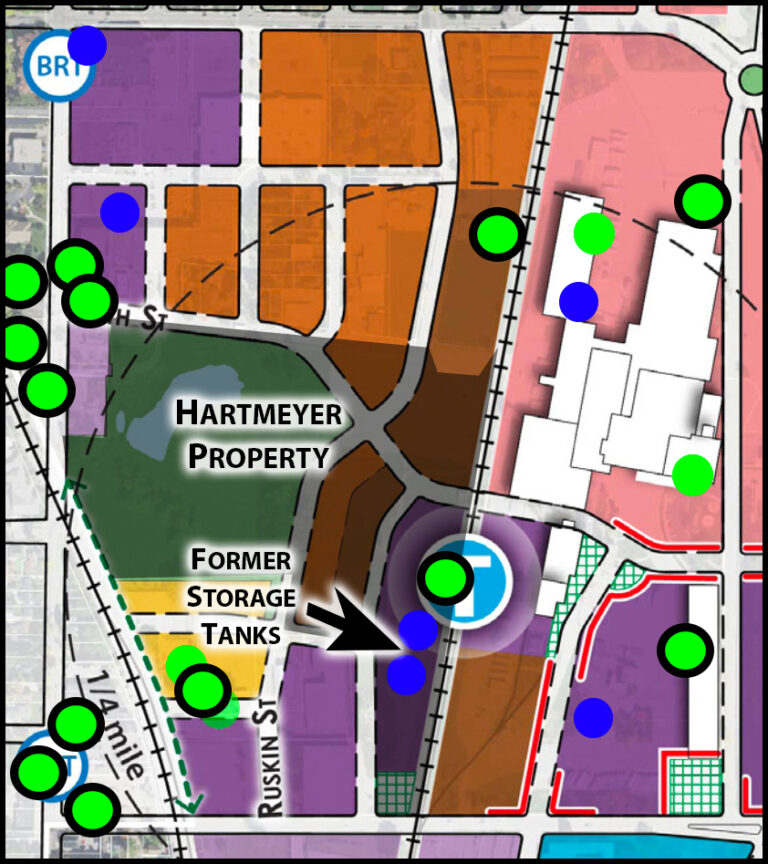
By Rob Lee
Midwest Environmental Advocates
Many community members agree that redeveloping the former Oscar Mayer facility and surrounding area is important for the economic vitality of the Northside and City of Madison. Many would also agree that economic equity in Madison requires solutions to the serious lack of affordable housing.
With the recent adoption of the Oscar Mayer Special Area Plan (the Plan), the Common Council is attempting to solve both problems at once. However, environmental contamination stemming from a century of industrial use must be addressed. Otherwise, the health of the individuals and families who will live, work and play around the redevelopment may be put at significant risk.
Despite two years of strategic planning, the Plan encourages residential development directly on top of and next to contaminated sites, while failing to even mention the contamination or the public health and environmental justice concerns it poses. Had Alder Syed Abbas not authored a last-minute amendment related to those very concerns, the final version of the Plan would not have mentioned them either.
The Abbas amendment provides that the city will “address racial justice and social equity during the OMSAP redevelopment process which must include assessing and preventing human exposures to toxic chemicals at the site and/or released from the site among all people and particularly at-risk low-income people and people of color.”
Moving forward, developers, the city and the Wisconsin Department of Natural Resources (DNR) must remain vigilant throughout the redevelopment process and ensure the Plan does not become another instance in which the risks of environmental contamination fall disproportionally on low-income people and people of color.
The potential for adverse public health impacts is particularly glaring when viewing an overlay of known contaminated sites onto a future land use map from the Plan. For example, the eastern end of the Hartmeyer property is the former site of two large above-ground diesel storage tanks and associated piping that leaked thousands of gallons in 1989, contaminating both the soil and groundwater. Although some efforts were undertaken to clean up the site, residual groundwater and soil contamination remained above DNR enforcement standards.
At the time the case was closed in 2008, the DNR permitted that residual contamination to remain based on a determination that it would naturally break down over time. When the second tank was removed in 2016, however, additional contamination was discovered and still has not been fully cleaned up.
During discussion on the Abbas amendment, city staff indicated to the Madison Common Council that the amendment would not substantively change the Plan because cleanup of the contamination as a result of redevelopment would occur as a matter of course under
applicable environmental laws.
To be sure, redevelopment can and often does result in the cleanup of environmental contamination that is sufficient to protect public health and the environment, but it is not a foregone conclusion that sufficient cleanup will occur. That depends on a variety of factors, including the motivations of developers and the willingness of public officials to impose strict public health protections.
Federal and state hazardous substance laws are designed to protect the environment and public health by imposing liability for the costs of cleanup on potentially responsible parties. Thus, limiting liability is a large motivation of all parties involved, including developers and the city. Developers can and certainly do make public health a priority when dealing with contaminated properties, but compliance with hazardous substance laws does not necessarily result in sufficient cleanup. The discovery of additional contamination on the Hartmeyer property years after cleanup efforts concluded is just one example of how contamination can be overlooked even when it was staring the DNR right in the face.
Perhaps even more important is that the public remains engaged. The Plan is not the final word on the redevelopment. Members of the public should therefore continue to take advantage of any and all public input opportunities as the Plan is implemented. Government transparency is key to meaningful public input, and Midwest Environmental Advocates encourages the city to have a more open dialogue about how it plans to ensure the historical contamination on the Oscar Mayer property and surrounding area does not become a threat to the public health.
For more information on contaminated sites on the former Oscar Mayer property and surrounding area, view the Transparency Project report at northsidenews.org/thetransparencyproject.
Midwest Environmental Advocates is a nonprofit environmental law center located in Madison that works to protect public rights in natural resources. For more information, visit midwestadvocates.org.